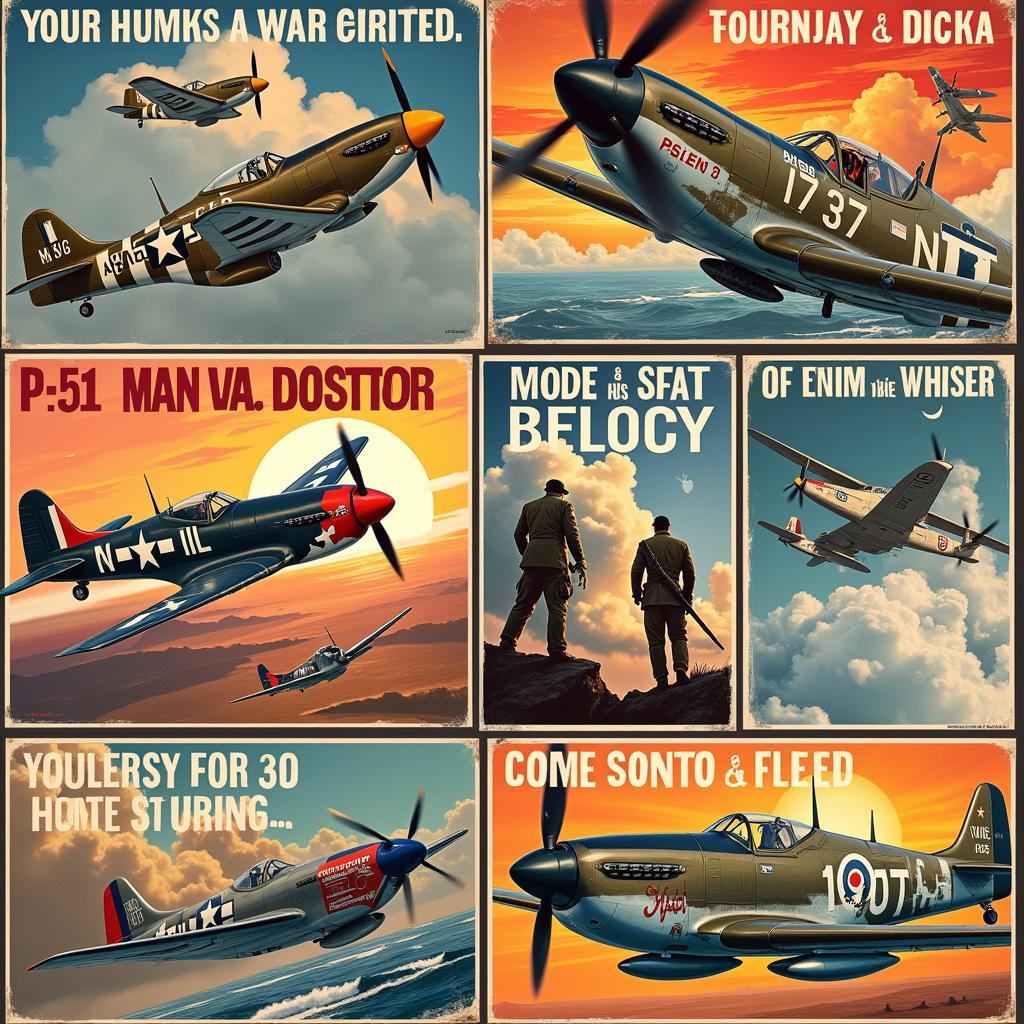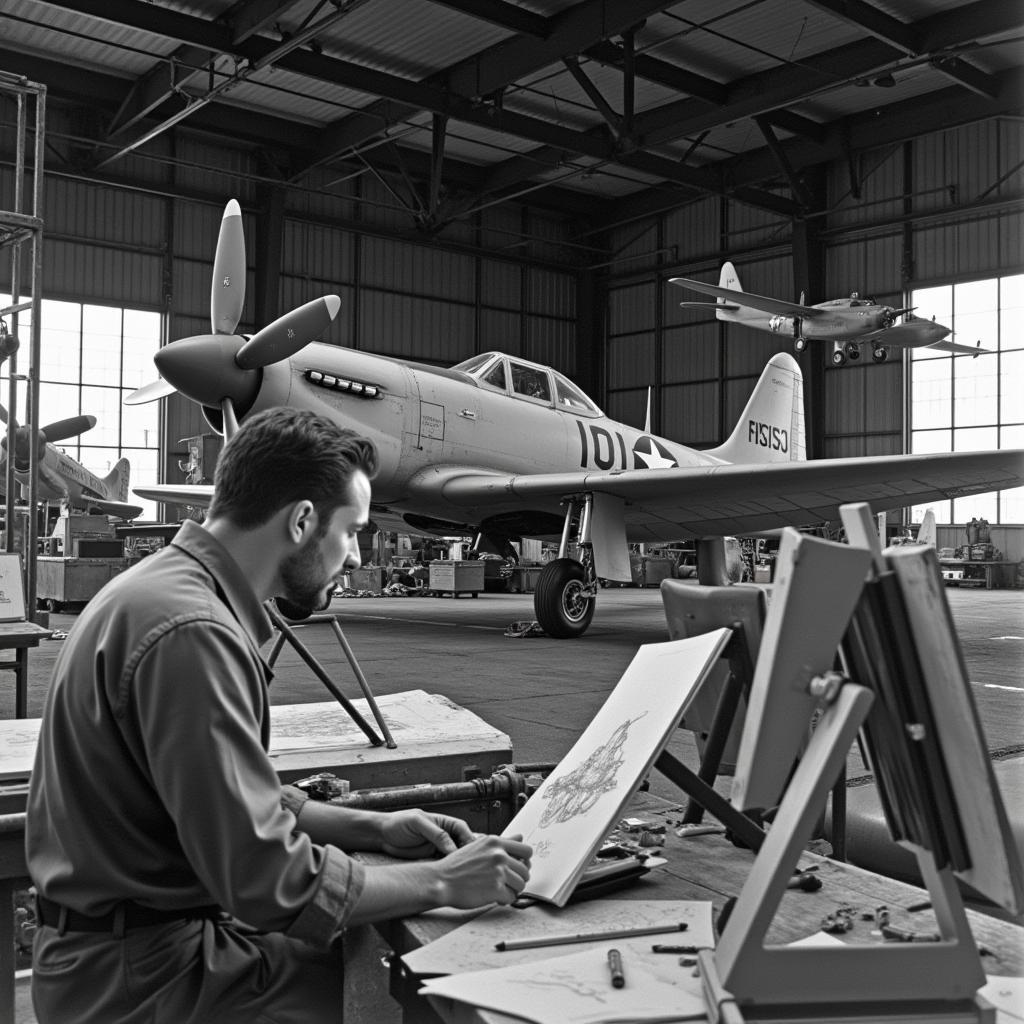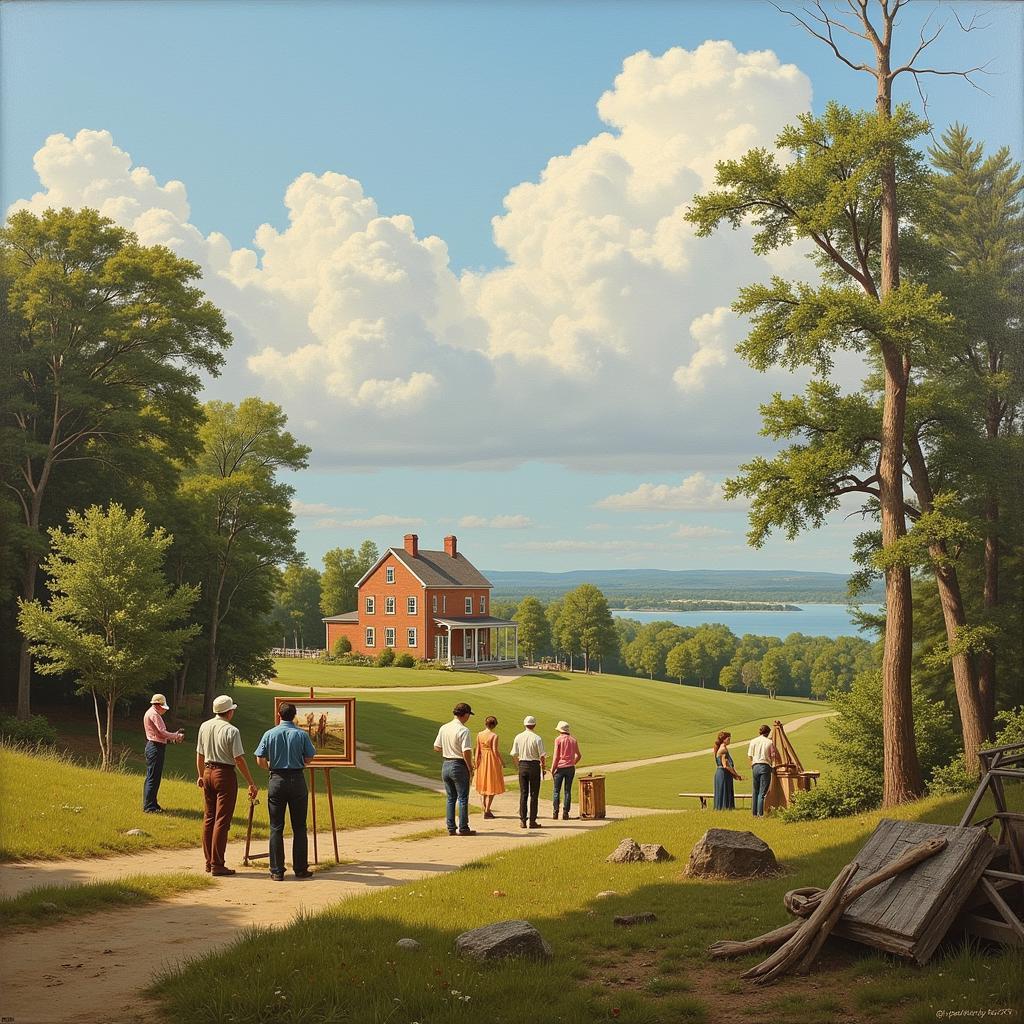World War 2 Aviation Art: A Digital Artist’s Perspective
World War 2 Aviation Art holds a unique place in the history of art, capturing the drama, heroism, and technological marvel of aerial combat. It’s a genre that blends documentary accuracy with artistic expression, offering a powerful window into a pivotal moment in human history. From the iconic profiles of Spitfires and Mustangs to the harrowing scenes of dogfights and bombing raids, these artworks tell a story of courage, innovation, and the enduring human spirit.
The Rise of Aviation Art in WWII
The Second World War saw an unprecedented surge in the popularity of aviation art. Governments recognized the power of art as propaganda, commissioning artists to create images that glorified their air forces and boosted morale. These works often depicted heroic pilots engaged in daring maneuvers, emphasizing the power and precision of their aircraft. Simultaneously, artists embedded within military units documented the reality of air combat, creating a visceral record of the war from a unique perspective. These varying perspectives contributed to a rich and diverse body of work, each piece reflecting the unique experience of the artist. Did you know that many of these artists actually flew in combat missions to gather inspiration and ensure accuracy in their depictions? This first-hand experience gave their work an authenticity that resonated deeply with the public.
 WWII Aviation Art Propaganda Posters
WWII Aviation Art Propaganda Posters
The demand for nose art tee shirts and other merchandise featuring these iconic images is a testament to their enduring appeal. These artworks aren’t just historical documents; they’re symbols of a generation’s courage and sacrifice.
Capturing the Spirit of Flight: Styles and Techniques
World War 2 aviation art encompasses a wide range of styles and techniques. Some artists favored realism, meticulously rendering the intricate details of aircraft and landscapes. Others embraced a more impressionistic approach, capturing the dynamism of aerial combat through bold brushstrokes and vibrant colors. Whatever the style, these artists shared a common goal: to convey the thrill and danger of flight. Many artists employed watercolor and gouache for their quick drying times and vibrant hues, perfect for capturing the fleeting moments of aerial combat. Others, seeking greater detail and longevity, worked with oils on canvas.
 WWII Aviation Artists at Work
WWII Aviation Artists at Work
The development of new photographic techniques also played a crucial role. Artists used photographs as reference material, allowing them to achieve unprecedented levels of accuracy in their depictions of aircraft and aerial maneuvers. This blend of artistic vision and technical precision is what makes World War 2 aviation art so compelling. If you’re interested in P51 Mustang art, you’ll find a wide range of styles and interpretations, reflecting the diverse talents of these wartime artists.
From Canvas to Digital: Preserving and Sharing WWII Aviation Art
Today, the legacy of World War 2 aviation art continues to inspire. Museums and private collections preserve these invaluable works, ensuring that future generations can appreciate the artistry and historical significance of this genre. The rise of digital technology has also opened up exciting new possibilities for sharing and experiencing these artworks. High-resolution scans and online galleries make it easier than ever to explore this rich visual history. Many talented digital artists are now creating their own interpretations of this genre, adding a contemporary perspective to these classic images.
Websites like the art auction magazine are excellent resources for discovering and acquiring original pieces and prints. For those interested in owning a piece of history, these artworks offer a tangible connection to a pivotal era. And if you’re looking for unique aviation-themed decor, consider C 130 wall art, which can add a touch of historical flair to any space.
Conclusion
World War 2 aviation art stands as a powerful testament to human ingenuity, courage, and the enduring fascination with flight. These artworks capture a specific moment in time, but their themes of bravery and innovation continue to resonate today. From the detailed realism of technical drawings to the expressive dynamism of combat scenes, World War 2 aviation art offers a unique and compelling window into a pivotal era. Let us continue to preserve and celebrate these remarkable works, ensuring that they continue to inspire and educate future generations. Those interested in modern military aviation art may enjoy exploring F 16 art.
FAQ
- What is the significance of World War 2 aviation art? It captures the historical context of aerial combat, technological advancements in aircraft design, and the human stories of pilots and crew.
- What are some common themes in WWII aviation art? Heroism, realism, technological progress, aerial combat, and the impact of war.
- Who are some notable WWII aviation artists? Many artists contributed, both official war artists and those inspired by the events. Researching online will reveal numerous notable names.
- Where can I find WWII aviation art? Museums, online galleries, auction houses, and private collections.
- How has technology influenced the preservation and accessibility of WWII aviation art? Digitalization has made these artworks more accessible to a wider audience through online platforms.
Need help with World War 2 aviation art or related topics? Contact us 24/7: Phone: 02462573573, Email: danteum@gmail.com, or visit us at Savico Megamall, 7-9 Đ. Nguyễn Văn Linh, Gia Thụy, Long Biên, Hà Nội 10000, Việt Nam. We’re here to help!

